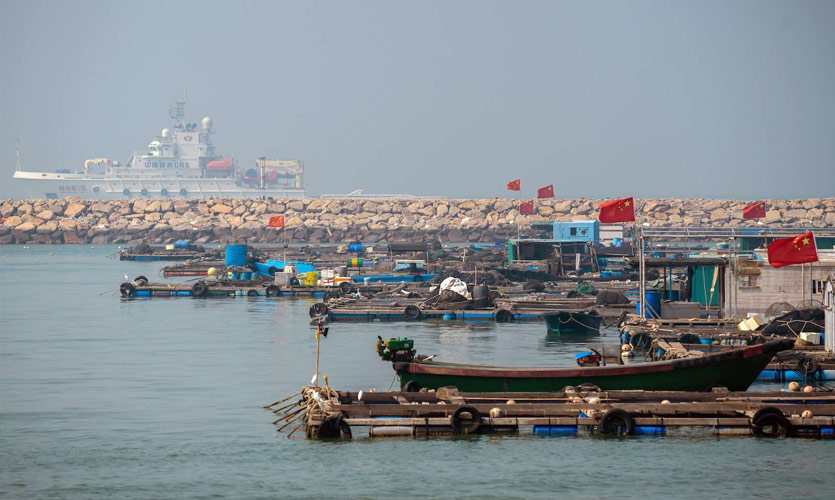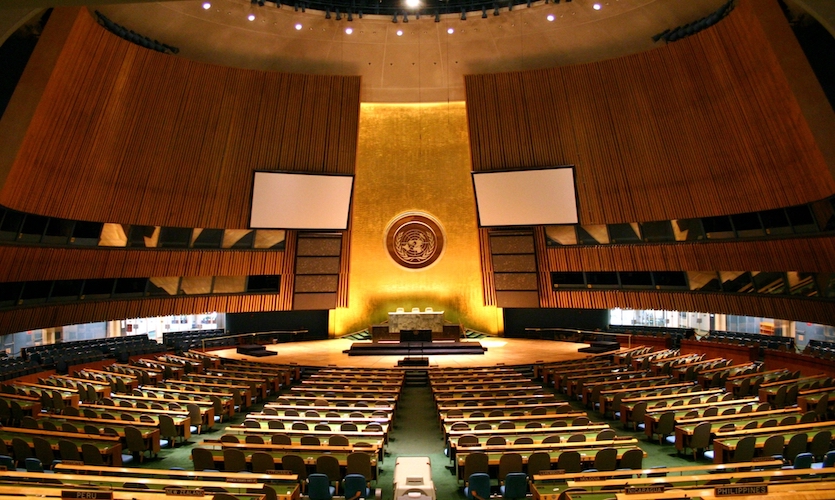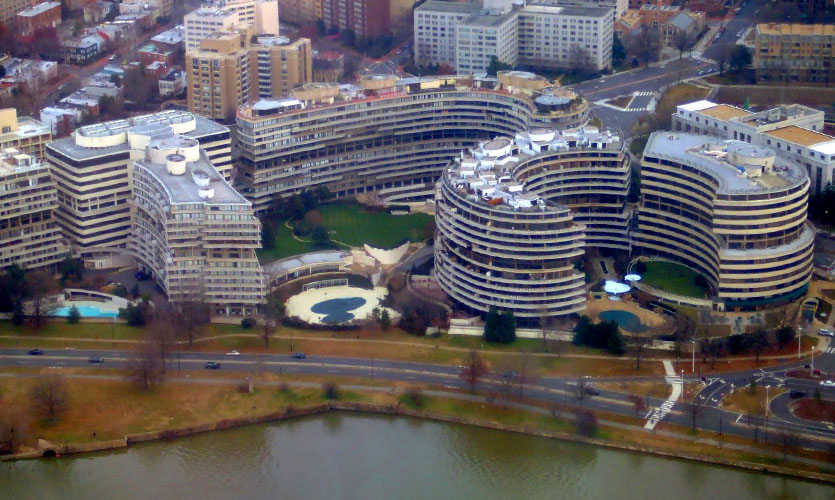The Chinese government has discredited recent research about the massive environmental damage caused by fishing boats dumping sewage and wastewater into the South China Sea.
According to a report from the US satellite imaging analysis organisation Simularity, Chinese ships have anchored around the contested Spratly Islands for the last five years, causing excess waste to accumulate.
Similarity CEO Liz Derr mentioned an excess of nutrients in the water during an event held by the Philippine think tank Stratbase ADR Institute on Monday. The presence of nutrients causes algal blooms, which have the potential to threaten coral reef habitat and the nearby fisheries, potentially jeopardising millions of people who depend on the fish inside the Philippines’ exclusive economic zone (EEZ). According to Derr, the research firm found high levels of chlorophyll-a on ships moored around the Spratly Islands. He reported finding a great deal of phytoplankton and phytoplankton-like algae in the water and on the reefs.
“In terms of determining where that chlorophyll is coming from, it’s a bit of a smoking gun that we are seeing big blooms of plants right where the ships are,” Derr told Foreign Correspondents Association of the Philippines (FOCAP) while addressing an online forum, notes the RFA organisation.
According to the report, “In water, Chlorophyll-a concentration is a measure of phytoplankton. Excess phytoplankton that cannot be consumed by the reef inhabitants dies off and sinks to the seafloor, where it is consumed by bacteria. These bacteria consume oxygen that would normally be available to the fish, creating a dead zone. On reefs, Chlorophyll-a concentration is a measure of the amount of plant material, such as ‘fleshy algae’ on the reef. Excess nutrients can speed the growth of ‘fleshy algae’ that can overtake the coral and destroy the reef habitat. Even small increases in nutrients can tip the balance towards algae.”
Derr claims that the ships anchored in the Spratlys dump raw sewage onto the reefs they are occupying. “This is a catastrophe of epic proportions and we are close to the point of no return,” Derr informed.
While officials in the Philippines questioned its accuracy, the Chinese foreign ministry spokesman described it as a joke. Spokesperson Zhao Lijian mentioned that the company was “faking facts, violating professional ethics, and spreading rumours about China,” adding that Beijing condemned its research. He said China is ready to cooperate with its littoral neighbours to safeguard peace and stability in the region. Beijing claims territory in parts of the South China Sea that overlaps Indonesia’s exclusive economic zone, but Brunei, Malaysia, the Philippines, Taiwan, and Vietnam make their own territorial claims. Indonesia does not consider itself a part of the South China Sea territorial disputes.
Background
A diplomatic spat was sparked by a report in Manila claiming that 220 ships had anchored in Philippine waters, including some that were said to be manned by Chinese maritime militias. The Chinese government denied the ships were anything more than fishing boats hiding from bad weather. Beijing maintained the area as its territory. The complaint from Manila was deemed an “unnecessary irritation”. Chinese ships were later noted off Whitsun Reef and in other waters of the EEZ by Philippine officials. As early as April, Manila’s foreign ministry began submitting daily diplomatic protests demanding that Beijing move the ships.
According to Simularity, on June 17, there were at least 236 ships in the Union Banks and 11 others around Thitu Island, a civilian-inhabited outpost controlled by Manila. According to the study, there was at least 1,177 kgs (2,594 pounds) of sewage being dumped by those ships at the Union Banks alone. Despite international law allowing it beyond 12 nautical miles of any coast, Derr told the journalists that sewage was usually dumped into the sea. An issue raised by the study relates to the release of wastes by vessels anchored on reefs, a violation of Chinese and international law. According to Chinese regulations, ships may only release sewage when they are moving in excess of four knots.
“Ships dump sewage all day every day all over the world. This is not anything special. The fact that they’re not moving makes this a concern,” Derr stated, providing a rather simple solution. Derr is of the view that the problem could be solved by directing ships to move away from reefs before dumping sewage.
Manila’s Take
The situation in Manila, however, was quite different, as the Philippine defence chief called for an investigation despite casting doubt on the report’s allegations. In its report, the Simularity Foundation discusses Manila’s economic interests in its expanding EEZ, which also covers the West Philippine Sea (WPS) as it is referred to by the government. The defence department says it will investigate the report as well, but Secretary Delfin Lorenzana told reporters it was “not true”.
“We have taken note of the news circulating online about the alleged dumping of waste in the South China Sea. Be that as it may, I have directed the Western Command who has jurisdiction over the WPS to verify and investigate,” said Lorenzana in a statement posted on the department’s website, according to Newsweek. He stressed that the findings would need to be verified.
Their scepticism could be explained by confusion surrounding a drawing in the paper. Despite its appearance as a photograph of a fishing boat dumping sewage into the ocean, the photo was taken at Australia’s Great Barrier Reef several years ago. The company explained that the photo was for illustration purposes and did not claim it was taken in the South China Sea. As a result of this confusion, Lorenzana said, “this intent to mislead casts great doubt on the accuracy of the Simularity report.”
“While we are confirming and verifying these wastes being dumped in the WPS, we consider such irresponsible acts, if true, to be gravely detrimental to the marine ecology in the area,” he said. “Despite overlapping claims and interests by states in the South China Sea, all nations must be responsible stewards of the environment.”
Read more: China’s Crackdown On DiDi: An Ongoing Attempt At Controlling Tech Giants
Is China The Only Culprit?
The ocean has long been used to dispose off all kinds of waste such as chemical and industrial waste, radioactive waste, trash, munitions, sewage sludge, and contaminated dredged material. In the past, little attention was paid to the negative impacts of waste disposal on the marine environment. The potential for recycling or reuse of these materials received even less attention. Coastal and ocean waters were often used to dump wastes since they were thought to have unlimited capacity to mix and disperse wastes. While there are no complete records of the volumes and types of materials disposed of in ocean waters in the United States prior to 1972, several reports indicate a vast amount of ocean dumping in the past.
The National Academy of Sciences estimated in 1968 how much ocean waste is dumped by vessels and pipelines: more than 100 million tons of petroleum products; two to four million tons of acidic chemical wastes from pulp mills; more than one million tons of heavy metals in industrial wastes; and more than 100,000 tons of organic chemical wastes.
The Council on Environmental Quality reported to the then president in 1970 that in 1968, 38 million tons of dredged material (34 percent of which was polluted), 4.5 million tons of industrial waste, and a million tons of garbage were dumped in the ocean by the US. The report revealed the presence of 4.5 million tons of sewage sludge (significantly contaminated by heavy metals) and 0.5 million tons of construction and demolition debris.
Despite China being the worst polluter of our oceans, the Hindustan Times reported that members of ASEAN such as Indonesia, the Philippines, Vietnam and Thailand, have also contributed heavily to polluting our oceans. Further, the US is the world’s largest producer of plastic waste with 42 million metric tons produced in 2016. Among coastal nations, the US is ranked third for dumping litter, illegally dumped trash and mismanagement of waste.
Conclusion
In some way, the confusion over the drawing, or Derr’s comment regarding the authenticity of the study, are all aspects of territorialisation, border warfare, and transnational competition. The report published by Simularity seems more likely to be a way for the US to assign blame. China’s denial of the allegations comes as no surprise. A shocking fact to note is that charges across the globe contribute their fair share to dumping human waste into the sea. While one could point fingers, it is highly noteworthy that the report only reveals a part of the facts.










